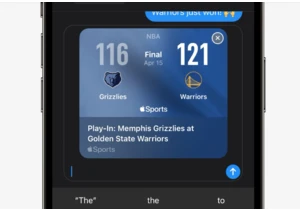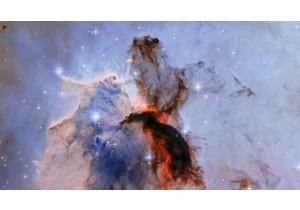There are several meteor showers we can count on seeing every year as Earth passes through the debris trails of known comets and asteroids orbiting the sun, and two of them are about to be in full swing. The Lyrids, which come from comet C/1861 G1 Thatcher, will be visible from April 17 to 26, most prominently in the skies over the Northern Hemisphere. And just a couple days later, the bright streaks of the Eta Aquarids — stemming from the famous Halley’s Comet — will make their first appearance around April 20 before peaking in early May. In both cases, you won’t need any equipment to enjoy the show.
How to see the Lyrids
While the Lyrid meteor shower isn’t the most fruitful astronomical event of the year, we can still expect to see an average of 15 meteors per hour during its peak on the night of April 21 going into April 22, if the conditions are right. In the days before and after that, they’ll come at a rate of about five per hour. The Lyrids’ radiant, or the point from which they appear to emerge, will be in the northeast near the constellation Lyra and well above the horizon by around midnight. You’ll want to set up in a spot with a wide view of the sky and as little light pollution as possible, and look up toward the east.
“The best time to watch is late evening on April 21 until the moon rises a few hours before dawn on April 22,” EarthSky recommends. “Then, after the moon rises, place yourself in the moon’s shadow.” You’ll have the best shot at seeing the Lyrids if you’re in the Northern Hemisphere (and if the weather is clear), but viewers south of the equator may be able to catch some too.
Every so often, the Lyrid meteor shower produces an unusual abundance of meteors in events known as outbursts, but when they’ll occur is unpredictable. In 1982, viewers in Florida spotted as many as 75 meteors per hour, according to NASA. While that’s by no means the norm, it’s not out of the question that you might catch an outburst one of these days. More likely than that, though, is the chance of seeing a fireball, or an exceptionally bright meteor that NASA says is occasionally a feature of the Lyrids.
The relatively short meteor shower will come and go in a little over a week, but the Eta Aquarids right after will offer a whole month of potential “shooting star” sightings.
How to see the Eta Aquarids
The Eta Aquarid meteor shower (also spelled Aquariid) is one of two annual meteor showers originating from comet 1P/Halley, or Halley’s Comet. “This comet is in a retrograde orbit around the sun,” EarthSky explains. “That means it runs around the sun in the opposite direction from Earth and all the other planets. As a result, we pass near its path twice,” giving us the Eta Aquarids on the outbound leg of the trip and the Orionids in late October during the inbound.
The Eta Aquarids are more plentiful than the Lyrids, and you can start looking out for them around April 20, according to NASA. The shower will be active until May 21, but the best time to spot meteors will be overnight from May 5 into May 6, when it peaks, in the pre-dawn hours. During that time, as many as 50 meteors per hour could be visible, versus about 10 per hour in the non-peak windows. The Eta Aquarids’ radiant is in the constellation Aquarius.
These meteors are best seen from the Southern Hemisphere, where they’ll pop up at a higher rate, but that doesn’t mean you won’t be able to see any if you’re in the north. Observers in the Northern Hemisphere may just see fewer, and they’re more likely to see those dubbed ‘Earthgrazers,’ or “long meteors that appear to skim the surface of the Earth at the horizon,” NASA notes. The Eta Aquarids in general move fast, at about 40.7 miles per second, according to the space agency, and they’ll often leave incandescent “trains” lingering in the sky after they’ve zipped by.
While the debris from Halley’s Comet graces our skies twice a year, the comet itself (which I can’t think about without also remembering that episode of Hey Arnold!) only swings past Earth about every 76 years, which last happened in 1986. It’ll make its next appearance in 2061.
After the Eta Aquarids wrap up, we’ll still have a few more meteor showers to look forward to through the summer, so there will be plenty of chances to view some shooting stars if you missed out this time around or just want to catch as many as possible. That includes the Arietids in early June, the Delta Aquarids starting in mid-July and perhaps the best known meteor shower, the Perseids, in mid-August.
This article originally appeared on Engadget at https://www.engadget.com/science/space/the-first-meteor-shower-of-spring-peaks-soon-and-another-is-close-on-its-heels-174458501.html?src=rss https://www.engadget.com/science/space/the-first-meteor-shower-of-spring-peaks-soon-and-another-is-close-on-its-heels-174458501.html?src=rssMelden Sie sich an, um einen Kommentar hinzuzufügen
Andere Beiträge in dieser Gruppe

This year marks the 125th anniversary of the New York International Auto Show (NYIAS), and despite concerns over tariffs, there are still a lot of manufacturers here showing off new models includin



The Apple Sports app just introduced a new feature called Game Card Sharing. This lets users generate digital game cards that carry information about a specific match. The cards can be generated fo


In the latest evidence that indie games are often where you find the boldest creative choices, look no further than Unbeatable. The hand‑drawn rhythm adventure title — announced in 2020 an

